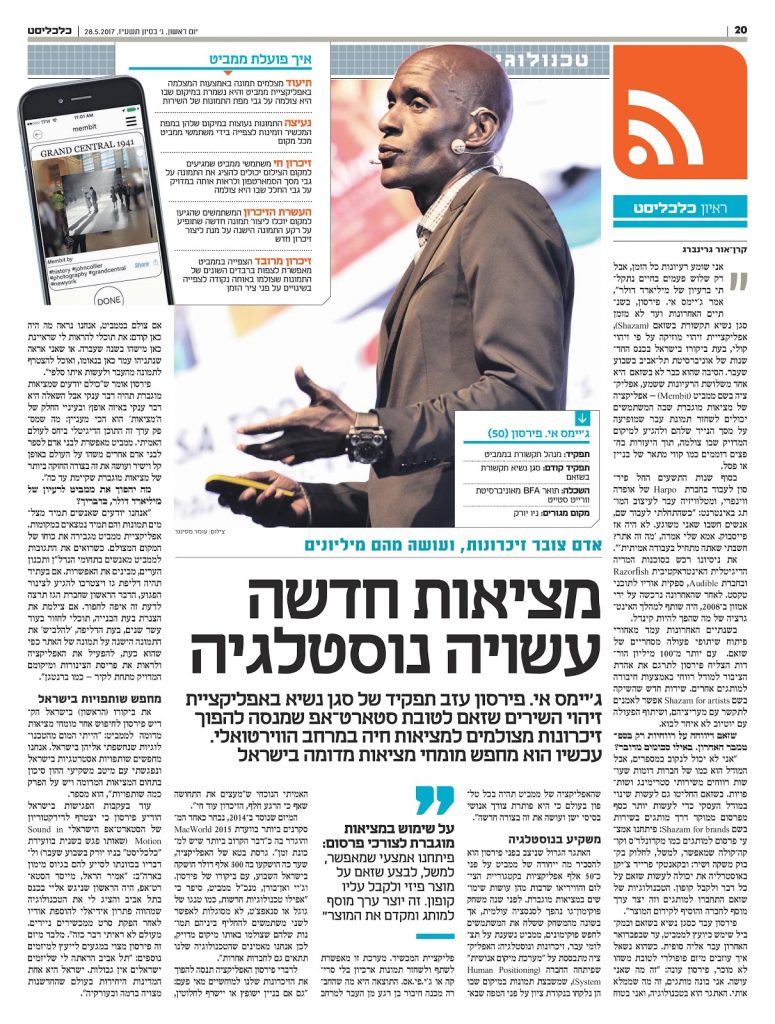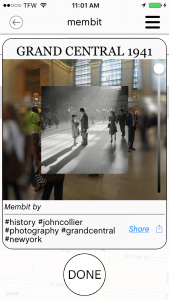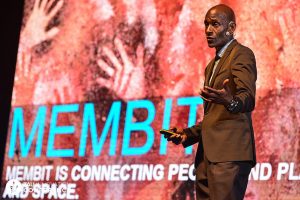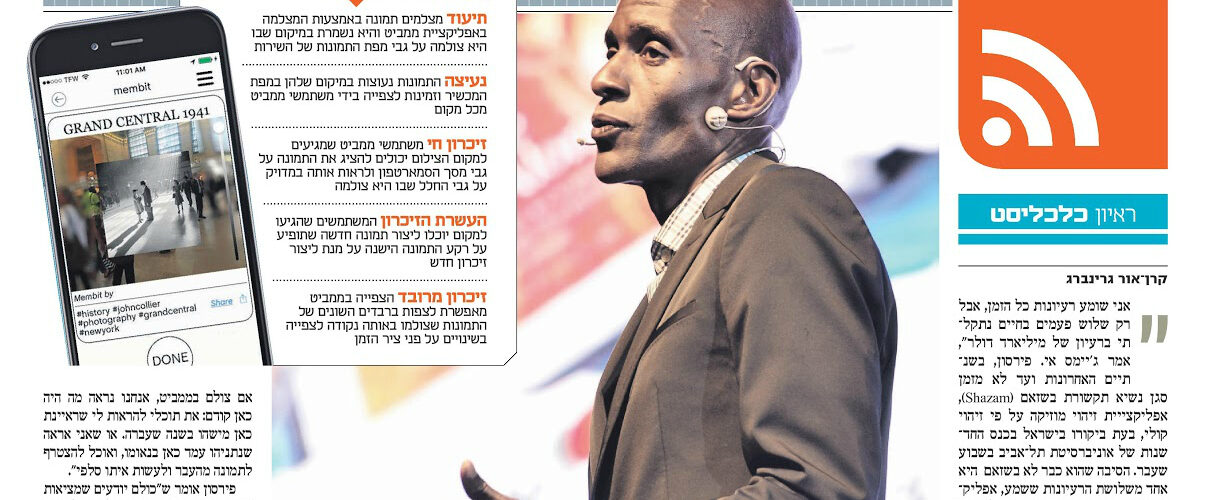The following is an English Translation of the original article as published in Calcalist 5/28/17
PDF English Translation-Calcalist Interview- James A. Pearson


The man who accumulates memories and makes millions of them
Keren-Or Grinberg 5-28-17
| Made of nostalgia:
James A. Pearson left his position as Vice President of Global Communications for Shazam for a startup making your photographic memories come to life in augmented reality. Now he’s looking for virtual reality experts in Israel. |
“I hear ideas all the time, but I have only come across what I thought might be a billion dollar idea, three times in my life.” said James A. Pearson, during his visit to Israel at TAU Innovation conference last week – who until recently was the vice president of communications at Shazam, the music recognition application.
A primary reason why he is no longer at Shazam – is one of those three ideas he heard – an iPhone app called Membit. Membit is an augmented reality app in which users can view or place a photo in the exact location where it was taken.
 How does it work? Users take a picture using the camera. The app then saves a photo in it’s exact location. It can be rediscovered on map of membits in your area, based on their position on the map. How does it work? Users take a picture using the camera. The app then saves a photo in it’s exact location. It can be rediscovered on map of membits in your area, based on their position on the map.
The app allows for filtered by user account and by hashtag and will include branded channels soon. Membit’s patented Human Positioning System (TM) allows for markerless Augmented Reality to be used anytime, anywhere, by anyone. It is a new way to share memories, and share the past of a place with the present, or share the present of a place with the future. |
At the end of the 1990s, Pearson began working for Oprah Winfrey’s Harpo company, before he started helping brands come to life on to the internet: “When I started working in digital, people thought I was crazy, there was no Facebook, and my mother immediately said, ‘What’s a website?’”.
That experience lead to a job at the interactive digital media agency Razorfish and then Audible, an audio software provider for text content. After the latter was acquired by Amazon in 2008, Pearson was involved in the team responsible for Audible’s transition and integration into what became Kindle.
In the past two years he has been involved in the development of promoting Shazam and it’s commercial partnerships. With more than 100 million downloads, Pearson managed to translate public interest into a profitable model by connecting it to other brands. A new service launched by Shazam for artists allowed artists to communicate with their fans, and collaboration with YouTube soon followed. He was also responsible for the strategic global PR around Shazam’s EBITDA profitability reported last September.

WHAT REVENUES ARE INVOLVED?
“I can’t comment on numbers or revenue, but the model is like that of similar companies that make profits from streaming and partnership services.” They also decided to make a change in the business model to make more money from targeted advertising and new advertising technology – through a new service called Shazam for brands.
Shazam developed new kinds advertising for brands such as McDonald’s and Coke – for example – a project that allows consumers to share a bottle of Coke and song. At Kentucky Fried Chicken in Australia, you can Shazam practically everything and get a coupon. Pearson worked as a vice president at Shazam and at the same time served as an advisor to Membit until last February.
“That’s what I do, I build brands, that’s what fills me, the challenge is building disruptive, emerging technology. I’m hopeful Membit’s application will be on every phone in the world because it solves an old basic human need in a very new way. ”
INVEST IN NOSTALGIA
Pearson’s biggest challenge is to explain what Membit’s uniqueness over the 50,000 other applications in the photography and video category, many of which make use of augmented reality. A year ago, Pokemon Go became a worldwide sensation, but unlike the game that sent users searching for Pokemon, Membit relies on past photographs, memories – and your own nostalgia.
The application is based on a Human Positioning System, which allows very precise placement of augmented content without markers or GPS. The result is an image from the past suspended in the present – in real space creates the feeling that although the moment has passed, the memory is still alive.
THE MEMBIT APPLICATION
Founded in 2014, the project was chosen as one of the most intriguing of the MacWorld 2015 committee and was defined as “the closest thing to a time machine.” A beta version of the app, which has already garnered $300,000 USD investment, was launched in Israel last week, with Pearson’s visit.
“Even new technologies, such as Google Tango or Snap’s World Lense, can not allow content to exist in precise relationship to the real world between sessions, so we believe that our technology will have great applications for both individuals and brands to tell stories,” said Jay Van Buren, CEO of Membit.
According to Pearson, the application will try to make our memories more tangible than ever: “Even if a building is completely renovated or destroyed, if you had a membit of it, you could see what was here before: You could effectively show me that you interviewed someone last year, and I can join the picture from the past and stand next to him.”
Pearson says that “Everyone knows that augmented reality will be a huge thing, but the question is a huge thing in what way? In my mind it’s the reality part of augmented reality that is the most interesting.”
“What membit does is provide digital content in meaningful relationship to the real world. It’s the most simple, the most direct, and the most powerful form of augmented reality that has existed so far. “
WHY WOULD YOU SAY MEMBIT IS A BILLION-DOLLAR IDEA?
“We know that people always take pictures and they’re always in the places,” says Membit, which adds your personal knowledge to the photographed place. If there is a gas leak in the future and you have to reach the damaged pipeline, the first thing the gas company wants to know is where to dig.
If you’d made a membit during construction, you could return in ten years, twenty – during the leak, to ‘superimpose’ the old picture onto the site – as it is now. You could see the pipes and their exact location under the wall – like an X-ray. A nuclear power plant can’t use GPS they’re made of concrete, but they can use Membit and HPS.
LOOKING FOR PARTNERSHIPS IN ISRAEL
“We were looking for strategic partnerships in Israel and I met with the best venture capitalists in the field of virtual reality, and there are a number of partnerships” he said. Following the meetings in Israel, Pearson announced that he would join the board of the Israeli start-up Sound in Motion (which he met again at the Calcalist conference in New York last week) and said he intended to help them raise funds in the US: “Amir Harel, the founder of the startup, The first person who came to me at a conference in Tel Aviv and introduced me to the technology that is an ideal solution for adding audio after making a movie from mobile devices. I’ve never seen anything like this.” In addition to this venture, Pearson is preliminary talks to advise other enterprises such as Powtoon and SandCage”
“Tel Aviv has shown me that Israeli entrepreneurs have no borders. Israel is one of the only countries in the world where innovation literally exists in it’s blood.”





